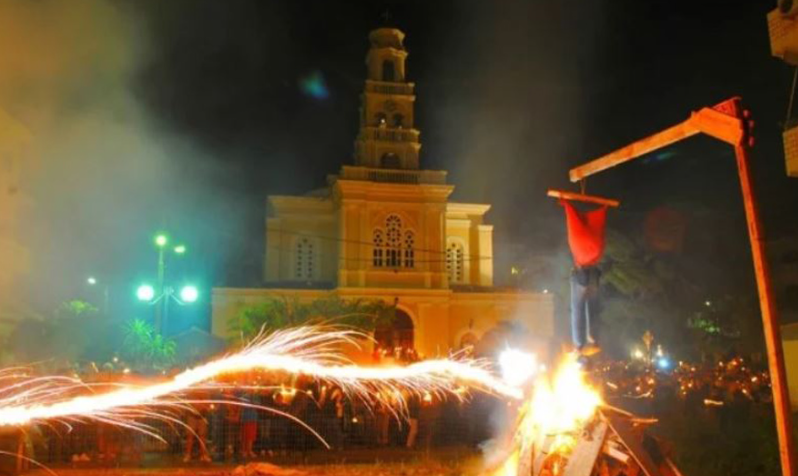Easter, or Pascha, is the most significant religious celebration in Greece, and Crete, the largest Greek island, offers a particularly vibrant and deeply rooted set of traditions that make this time of year exceptionally special. Experiencing Cretan Easter traditions provides a profound glimpse into the island’s cultural and religious life, blending ancient customs with heartfelt communal activities. The celebrations are marked by a mix of solemn religious observances and joyful festivities that bring communities together in a powerful display of faith, heritage, and hospitality.
The Spiritual Preparation: Great Lent
The journey to Easter in Crete begins with Great Lent, a 40-day period of fasting, prayer, and reflection. This period of spiritual preparation is taken seriously by many Cretans, who abstain from meat, dairy, and other rich foods.
- Forgiveness Sunday: The first Sunday of Lent, known as “Forgiveness Sunday,” involves special church services where individuals seek forgiveness from one another, symbolizing a fresh start.
- Strict Fast: Throughout Lent, traditional Cretan dishes made with vegetables, legumes, and seafood dominate the diet. Dishes such as “horta” (wild greens) and “fava” (split pea puree) are commonly enjoyed.
Holy Week: A Time of Reflection and Anticipation
Holy Week, or “Megali Evdomada,” is the climax of the Lenten season, leading up to the Resurrection on Easter Sunday. Each day of Holy Week carries its own significance and traditions.
Palm Sunday
Palm Sunday marks the beginning of Holy Week with the commemoration of Jesus’ triumphant entry into Jerusalem. Churches are decorated with palm fronds, and special services are held.
- Blessing of Palms: Parishioners receive palm crosses, which they take home and place above doorways for blessings and protection.
Holy Wednesday and Thursday
As Holy Week progresses, the focus shifts to the events leading up to Jesus’ crucifixion.
- Holy Wednesday: The Sacrament of Holy Unction, a service for healing, is performed in the evening. Parishioners are anointed with holy oil.
- Holy Thursday: This day commemorates the Last Supper. Churches hold a solemn service where the priest reenacts the washing of the disciples’ feet. The evening service, known as “The Passion of Christ,” includes readings of the Twelve Gospels.
Good Friday: A Day of Mourning
Good Friday, or “Megali Paraskevi,” is the most solemn day of Holy Week, marked by mourning and reflection.
- The Epitaphios Procession: In the evening, a wooden bier adorned with flowers, symbolizing Christ’s tomb, is carried through the streets in a somber procession. The Epitaphios is followed by mourners holding candles and singing hymns. This procession often winds through the entire village or neighborhood, fostering a profound sense of community and shared grief.
Holy Saturday: The Joy of Resurrection
Holy Saturday transitions from mourning to joyous anticipation of the Resurrection.
- Preparation for Midnight Service: Families prepare by cleaning their homes and cooking traditional dishes for the Easter feast. Red-dyed eggs, symbolizing the blood of Christ and the renewal of life, are prepared.
- Midnight Vigil: The most significant service of the year begins just before midnight. Churches fill with parishioners holding unlit candles. At midnight, the priest proclaims, “Christos Anesti!” (Christ is Risen!), and the Holy Light is passed from candle to candle, illuminating the church. Fireworks and bells announce the Resurrection, and the joyous atmosphere spills into the streets.
Easter Sunday: A Feast of Celebration
Easter Sunday, or “Kyriaki tou Pascha,” is a day of immense joy and celebration, marked by festive meals, music, and dancing.
- Easter Feast: The centerpiece of the Easter meal is often spit-roasted lamb, symbolizing Christ as the Lamb of God. Other traditional dishes include “magiritsa” (a soup made from lamb offal and greens), “tzatziki,” and a variety of salads and pastries.
- Egg Cracking: A popular game involves cracking the red-dyed eggs. Each person taps their egg against another’s, and the one whose egg remains uncracked is said to have good luck for the year.
- Community Gatherings: Families and friends gather for large meals that last well into the afternoon and evening. Traditional Cretan music and dance play a central role, with celebrations often spilling out into the streets and village squares.
The Continuation of Celebrations: Bright Week
The joy of Easter continues into the week following Pascha, known as “Bright Week.” During this time, families visit each other, and additional church services are held to extend the celebration of the Resurrection.
- Visiting Relatives: It is customary to visit relatives and friends to share in the Easter joy, exchange greetings, and partake in leftover Easter treats.
- Religious Services: Churches hold daily services throughout Bright Week, maintaining the spiritual high of the Easter celebration.
Conclusion
Experiencing Cretan Easter traditions is a profound journey through the island’s rich cultural and religious heritage. From the solemn reflections of Lent and Holy Week to the jubilant celebrations of the Resurrection, Cretan Easter is a time of deep spiritual renewal and communal joy. The blend of ancient customs, heartfelt rituals, and vibrant festivities provides a unique and unforgettable insight into the soul of Crete. Whether participating in the moving processions, enjoying the festive meals, or simply soaking in the joyous atmosphere, Easter in Crete offers a deeply enriching and memorable experience.


